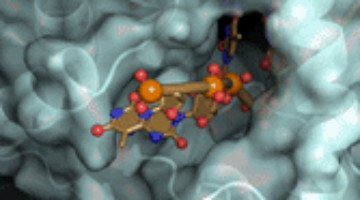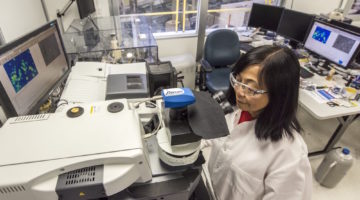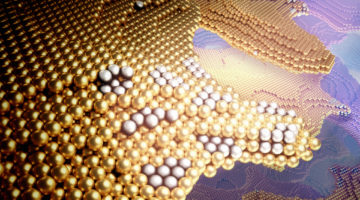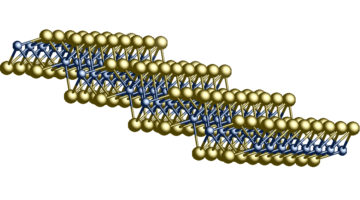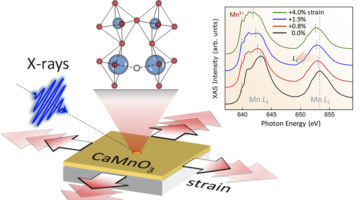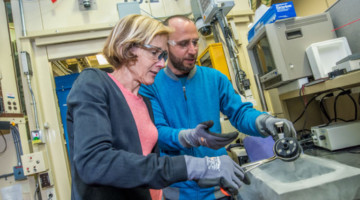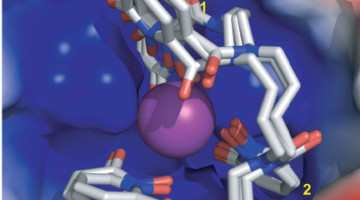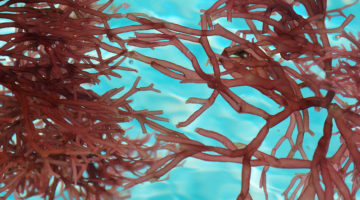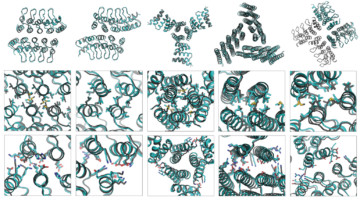The actions of a protein used for DNA replication and repair are guided by electrostatic forces known as phosphate steering, a finding that not only reveals key details about a vital process in healthy cells, but provides new directions for cancer treatment research. Read more »
What’s On Your Skin? Archaea, That’s What
It turns out your skin is crawling with single-celled microorganisms—and they’re not just bacteria. A study by Berkeley Lab and the Medical University of Graz has found that the skin microbiome also contains archaea, a type of extreme-loving microbe, and that the amount of it varies with age. Read more »
A Closer Look at Dynamic Restructuring in Catalysts
Researchers have structurally and chemically “visualized” the surface of a silver–gold alloy as it reorganizes itself during catalytic activation. The insights gained from this methodology can lead to improved catalysts for energy-intensive industrial applications, thereby increasing efficiency and reducing waste. Read more »![]()
![]()
2D Material’s Traits Could Send Electronics R&D Spinning in New Directions
Working at the ALS, researchers have found another family of materials where they can both explore the physics of 2D topological insulators and do experiments that may lead to future applications. The material—known as 1T’-WTe2—bridges two flourishing fields of research: that of so-called 2D materials and topological materials. Read more »
Fine-Tuning Oxygen Vacancies with Coherent Strain
Researchers have demonstrated a novel way to systematically strain-engineer oxygen vacancies in complex transition-metal oxide thin films. The work advances our ability to tailor such defects, small changes in which can lead to dramatic changes in material properties such as conductivity and magnetism. Read more »
Study Sheds Light on How Bacterial Organelles Assemble
Scientists are providing the clearest view yet of an intact bacterial microcompartment (BMC), revealing the polyhedral structure and assembly of this organelle’s protein shell. Having the full structure can help provide important information in fighting pathogens or bioengineering bacterial organelles for beneficial purposes. Read more »
Protein Complex Shows Promise for Berkelium Separation
Scientists found that the element berkelium breaks form with its heavy-element peers by taking on an extra positive charge when bound to a synthetic organic molecule. This property could help scientists develop better methods for handling and purifying nuclear materials. Read more »
New Evidence for a Water-Rich History on Mars
Mars may have been a wetter place than previously thought, according to experiments on lab-synthesized mineral samples serving as proxies for Martian meteorites. Shock experiments followed by x-ray diffraction studies showed how changes in the minerals could indicate a more water-rich history for the Red Planet. Read more »![]()
![]()
A Seaweed Derivative Could Be Just What Lithium-Sulfur Batteries Need
Lithium-sulfur batteries have great potential as a low-cost, high-energy, energy source for both vehicle and grid applications. However, they suffer from significant capacity fading. Now, scientists have found that carrageenan, a seaweed derivative, acts as a stabilizer, allowing for more cycling and an extended lifetime. Read more »
A Systematic Approach to Customizing Cyclic Proteins
Proteins consisting of identical subunits arranged symmetrically around a central axis (cyclic homo-oligomers) play key roles in many biological processes. Researchers have now developed a systematic approach to their design and demonstrated its accuracy using protein crystallography and small-angle x-ray scattering. Read more »
- « Previous Page
- 1
- …
- 66
- 67
- 68
- 69
- 70
- …
- 83
- Next Page »
